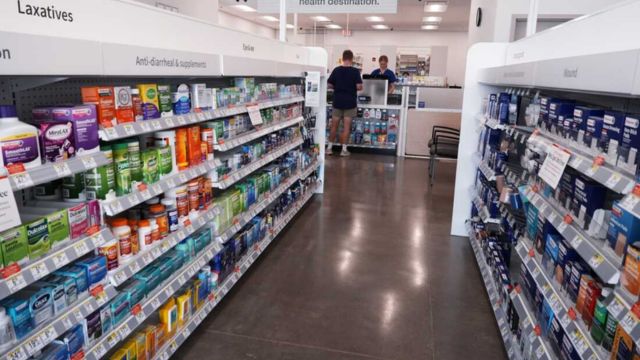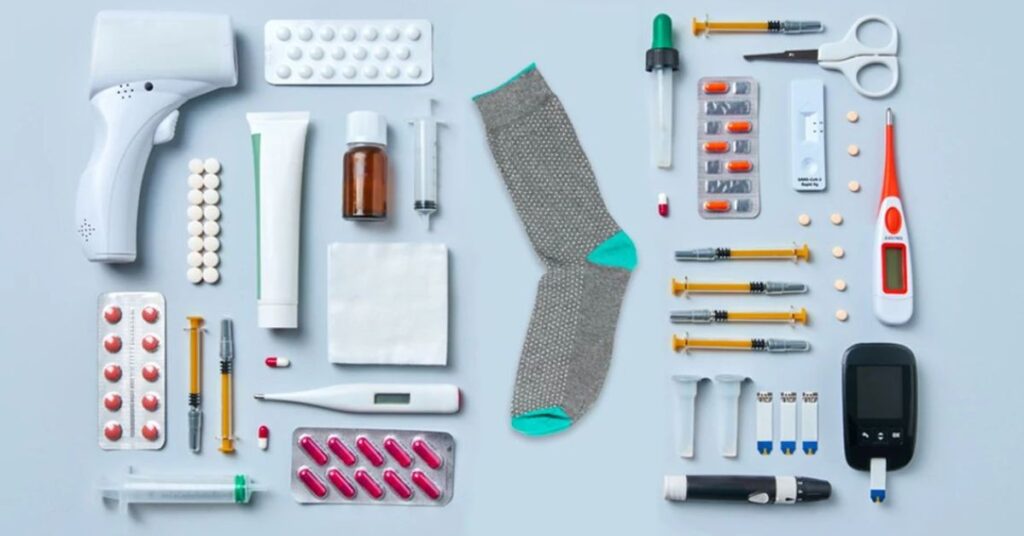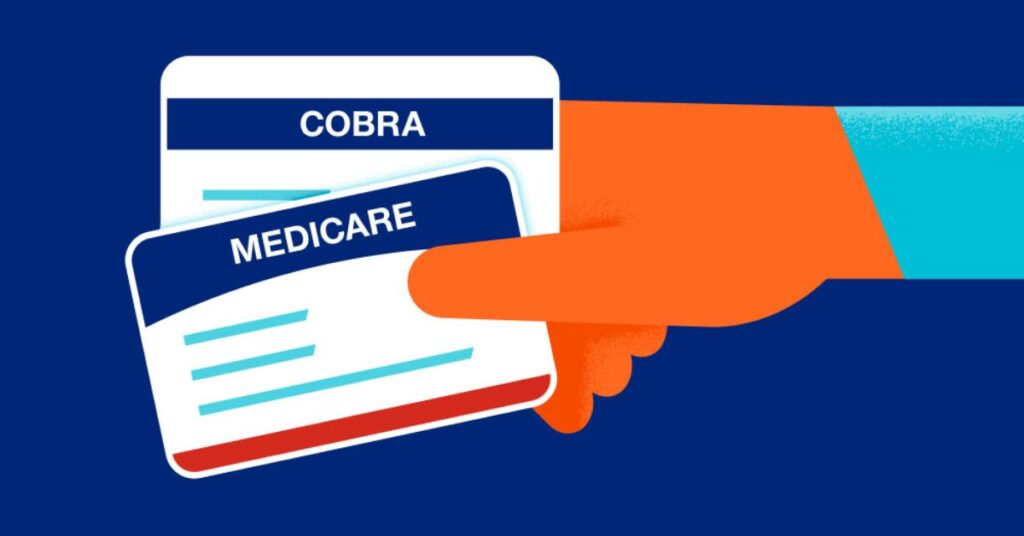What Are Pharmacy Networks in Medicare?
What is a network of pharmacies?
You will have to use a drugstore network whether you sign up for a Medicare Advantage Plan (MA-PD) including prescription drug coverage or a Medicare prescription drug plan (PDP). These are a list of pharmacies under contract with your insurance company to fill your medications at less expense. By negotiating pricing with your plan, these pharmacies help you spend less for your drugs when you fill prescriptions at one of them.
Consider it as a team of pharmacies collaborating with your insurance provider to ensure you pay the best possible rate.
How it’s done:
A list of eligible pharmacies within the network will be provided upon acquisition of a Medicare prescription medication plan. To get the most reasonably priced medications, you must visit one of these pharmacies. Whether they are a local pharmacy or a well-known chain of pharmacies, if they are in the network you will obtain the negotiated rates for the plan, which are far lower than what you would pay at a drugstore outside the network.
For instance, if you enrolled in a Medicare medication plan and live in California, the plan will list of pharmacies that take that plan. Should you visit a pharmacy in-network, you will pay $20 for a month’s worth of diabetes meds. Should you choose to visit a pharmacy outside of the network, however, the identical prescription may cost $35 or more. Maintaining an in-network pharmacy would thus help you to save a lot.
Why is pharmacy networks important?
Direct access to your drugs and your prescription expenses depend on pharmacy networks. Using a pharmacy in your network will help you access convenience-oriented features like automated refills or mail-order delivery in addition to greatly reduce your drug expenditures. Conversely, depending on an out-of-network pharmacy could cost far more than required, therefore taxing your budget.
Knowing which pharmacies are in your network will help you to streamline your prescription management, save money, and prevent additional expenses.
How Pharmacy Networks Help Lower Prescription Drug Costs
Reduce expenses with preferred pharmacies:
Preferred pharmacies are among the most significant means by which pharmacy networks help lower drug costs. Some pharmacies in your network are labelled as “preferred,” implying they have negotiated even better drug pricing with your insurance carrier. Using these pharmacies will help you save more on your routinely needed prescriptions.
For some Medicare Advantage and Prescription Drug Plans, for example, preferred pharmacies provide discounts and reduced co-pays for particular drugs. This lets seniors maximise the value of their plan without going over budget.
For instance, suppose you mediate for high blood pressure using medicine. You might just pay $10 a month by filling your medication at a designated pharmacy in your network. On the other hand, if you use a non-preferred pharmacy, the identical medicine can run you $25 more. Each month, this amounts to $15 savings; over a year, these might be really large.
Effect on the cost of medications:
Pharmacy networks are about cost rather than only convenience. Reducing your expenses depends on pharmacies selling drugs at the negotiated rate when they agree to operate under your Medicare plan. Medicare maintains low drug prices by working with network pharmacies, therefore you pay the lowest price for your prescription.
Should you travel outside of network, you could be paying full price for your prescriptions, frequently far more than the agreed-upon rates via in-network pharmacies.
For instance, a senior in Texas who requires insulin for diabetes may pay $50 a month for the medicine at an in-network pharmacy; but, should they choose to go outside of network, they could wind up paying $100 or more each month. Many seniors find that these additional expenses soon mount up and become unaffordable.
Additional savings via mail-order programs:
Certain Medicare plans now include mail-order pharmacy services, which let you obtain a 90-day supply of your medication—sometimes at even less expense than personally picking up your prescriptions. Because their running expenses are less than those of conventional pharmacies, these mail-order companies sometimes provide large savings.
For seniors who use maintenance drugs—those you must take routinely for chronic illnesses—using mail-order services can be quite helpful. Getting a three-month supply delivered right to your door will save time and money by lowering the need for monthly pharmacy visits.
For instance, a Florida senior taking cholesterol drugs can pay just $30 and obtain a 90-day supply from an in-network mail-order pharmacy. On the other hand, if they visit a neighbourhood drugstore, they could pay $15 a month, which would come to $45 for a three-month supply—a $15 discount utilising the mail-order alternative.
Why this part is important: seniors will be aware of the large savings in-network pharmacies can help them to reach. This part emphasises useful advice and actual case studies illustrating how selecting the appropriate pharmacy network can help to reduce prescription expenditures.
What Happens if You Use an Out-of-Network Pharmacy?

If you have a Medicare prescription medication plan, you could be curious as to what happens should you fill your prescriptions at a pharmacy not included in the network of your plan. The quick response is probably you will pay more.
Medicare plans help you save money by working with a certain network of pharmacies. Depending on your plan, if you choose to go outside-of-network you could pay more out-of-pocket for your drugs or perhaps have absolutely no coverage at all.
Greater out-of-pocket expenses:
You won’t get the discounted rates your plan has negotiated with in-network pharmacies when you fill a prescription at a pharmacy not in your network. You might instead wind yourself paying full retail price for the drugs. Furthermore, in many circumstances this price will be far more than what you would spend at an in-network drugstore.
For the same drug, some pharmacies outside of your network could charge you twice as much, for instance, leaving you to pay the difference.
For instance, suppose you need to fill a prescription for blood pressure medicine but have a Medicare drug coverage. Your copay at a drugstore you know might be $10. But you might be asked to pay $30 or more for the identical medicine at an out-of-network drugstore. Every time you fill that prescription, that comes out of your pocket an additional $20.
Restricted or none coverage for pharmacies outside of networks:
If you use a pharmacy outside of your Medicare network, occasionally your Medicare medication plan might not pay for any of the charges. You will thus be in charge of paying for 100% of the drugs. Though not all plans work this way, every senior should be informed of before they visit an out-of-network drugstore.
For instance, suppose you need a prescription filled and are in New Jersey. Should you visit a pharmacy not included in the network of your plan, your plan may reject to pay for any of your medications, leaving you with the entire payment. This might soon mount up, particularly if you take several drugs a month.
Not every pharmacy exists exactly:
Another reason to keep with in-network pharmacies is that not every one of them provides the same advantages or services. Better medication management tools include automatic refills, medication treatment management, and drug interaction guidance abound in in-network pharmacies, therefore enabling you to better control your health.
Out-of-network pharmacies might not offer these extra services, therefore you might be deprived of extra support meant to enable you follow your treatment plan and prevent difficulties.
For instance, a senior in California can make use of a nearby in-network drugstore providing free pharmacist consultations to assist in better understanding of their prescriptions. An out-of-network pharmacy might not, however, offer the same degree of tailored treatment or help.
In essence, utilising out-of-network pharmacies could save you some time or seem handy in the near term, but over time it could cost far more. Choosing to keep with a pharmacy included in your Medicare plan guarantees that you are obtaining the most reasonably priced drugs and advantage from additional services meant to keep you healthy.
How to Find the Right Pharmacy Network for Your Medicare Plan
Choosing the Correct Pharmacy Network for Your Medicare Coverage
Making sure you can receive reasonably priced drugs under your Medicare prescription coverage depends on selecting the correct pharmacy network. Not only about selecting any drugstore; you also have to make sure it’s in-network to cut prescription expenses. Here is how to locate the pharmacy network most appropriate for your circumstances.
Leveraging Medicare’s internet resources:
Using the tools on Medicare.gov will help one locate an in-network pharmacy most easily. Enter your zip code and Medicare plan data to search for pharmacies on the helpful “Find a Pharmacy” function on the website. You will then get a list of local pharmacies that take your plan.
Furthermore available are the pharmacy directories supplied by the insurance company of your Medicare plan. Whether your particular plan is Medicare Advantage or Prescription Drug Plan (PDP), these directories will identify the pharmacies that cooperate with your particular plan.
Look for coverage right in your neighbourhood:
Although most big pharmacies are in-network with Medicare programs, you should find out whether any local pharmacies are included. Pharmacy networks could differ depending on your region; so, it is advisable to look for local pharmacies in your vicinity that fit the network.
For instance, if you reside in a remote region and find less in-network pharmacies, you should specifically review the list on Medicare.gov or the provider website of your plan. Certain plans may even call for mail-order pharmacies to assist with accessibility—especially in underprivileged neighbourhoods.
Go over the formulary of your plan:
Review the formulary—that is, the list of covered medications—of your Medicare plan before selecting a pharmacy. Important information regarding which drugs your plan covers and how much you would pay at an in-network versus an out-of-network pharmacy can come from the formulary.
Make sure the pharmacy you decide on carries the drugs you require in stock and that formulary of your plan covers those drugs. For elders controlling chronic diseases, certain pharmacies might even provide discounts or other assistance for maintenance drugs.
Get in touch personally with your chemist:
After you have reduced the number of pharmacies in your network, it would be advisable to phone ahead to be sure they can fill your medications as expected and accept your Medicare plan. You can find out whether your drugs are available and whether they provide any unique services as home delivery or automatic refills.
For instance, a Florida senior might phone their neighbourhood pharmacy to enquire about if they accept their Medicare Advantage Plan and whether free delivery of prescription refills is offered. In this sense, individuals are not only making sure they are saving money but also using extra services meant to simplify their lives.
Ask about recommended mail-order choices and pharmacies.
Certain Medicare plans call for preferred pharmacies, which provide either reduced co-pays or extra prescription medicine discounts. Ask the customer service of your plan about the recommended pharmacies in your area and whether you could benefit from mail-order services for even more savings when you are looking over your drugstore alternatives.
For instance, a senior in Texas may discover that using a favoured pharmacy via mail order will save an additional $20 monthly on their medications. Using mail-order pharmacies not only helps them save money but also relieves the need for frequent trips to the pharmacist.
As you consider your Medicare options, it’s important to understand how aging can impact your overall health, including changes to your immune system. For more information on how your immune system changes after 50, and what every senior should know, check out our article on the Immune System Changes After 50. This article provides key facts about immune health, which may help you manage your health and prescription needs better.
Why Switching Pharmacies Could Save You Money
Although it could seem like a pain, switching pharmacies could be a quick approach to cut your prescription drug prices. Medicare programs provide major advantages via mail-order services and recommended pharmacies. Changing pharmacies could help you cut your out-of-pocket costs if you aren’t now using these choices.
Changing pharmacies to save money:
Many seniors are unaware that by choosing a favourite pharmacy inside their network, they might cut costs on every prescription they fill. Many times, preferred pharmacies provide reduced co-pays and drug savings coupons. These pharmacies have specific agreements with your Medicare plan, which lets them forward those savings to you.
For instance, a Michigan senior paying $40 a month for their cholesterol medication at their present drugstore could find that switching to a recommended pharmacy lowers the cost to $25 a month. Just by changing a small bit, that saves $180 year.
You should definitely investigate the preferred pharmacies that are accessible in your neighbourhood if you have not looked at them. Particularly if you take maintenance drugs on a regular basis, even a minor change in cost might mount up over time.
How might one quickly switch pharmacies?
Changing your pharmacy at any time is allowed most Medicare plans, and switching pharmacies is an easy process. Once you’ve decided to change, you can start using the new pharmacy for your medications; there’s no waiting for an open enrolment period.
All you have to do is let your new pharmacy know your Medicare plan information and have them ask for a transfer of your present prescriptions. With very minimal work on your side, this quick method can save you a lot of money.
For instance, a senior in New York who routinely fills a diabetes prescription could find that their present drugstore charges more for co-pay. Learning about a preferred pharmacy choice through their Medicare coverage, they switch and save $20 per month, which comes to $240 in savings annually.
Mail-order pharmacy for still greater discounts:
Changing to a mail-order pharmacy could save you considerably more money if you require maintenance drugs—prescriptions you must routinely pick up for chronic ailments. Mail-order services, which can provide a 90-day supply of medication at a less cost than personally visiting a pharmacy, are common feature of Medicare plans. Convenience also comes with having your prescription delivered right to your door.
For instance, a senior in California on heart medicine could discover that their local drugstore charges $15 per month while their Medicare plan’s mail-order service charges merely $30 for a 90-day supply. They may save $30 every three months, or $120 annually, by going with the mail-order choice.
Other factors to give thought on changing:
Apart from financial savings, there are additional reasons elderly people could choose to change pharmacies. Certain pharmacies provide extras, including:
- Convenience automatic refills
- Medication therapy management to enable seniors keep on top of their prescriptions
- Delivery options to save effort and time
Senior-friendly customer service to help with any queries or problems connected to Medicare.
For instance, a Florida senior might change to a different drugstore that provides free prescription delivery. Along with saving money, this eliminates a monthly trip to the pharmacy for them.
In essence,
Though it seems like a minor adjustment, switching pharmacies can result in large savings. Changing pharmacies can significantly affect your Medicare drug expenses whether you’re looking for better bargains, mail-order services, or preferred pharmacies. It’s thus advisable to give the switch some thought even if you haven’t investigated your alternatives. Your wallet will say thank you.
Maximising Your Medicare Drug Plan Discounts
Just the first step is knowing how pharmacy networks operate and selecting the correct one. Review your plan often, investigate all of your alternatives, and make sure you are using every chance to cut your Medicare prescription drug prices to really maximise your savings. Here’s how you do that.
Go over your Medicare drug plan often.
Review your Medicare drug plan during open enrolment or anytime changes take place since it may vary year to year. Reviewing your plan will help you make sure your present pharmacy is still in-network and that you are still getting the greatest coverage for your drugs.
Plans can alter their preferred or formulary network pharmacies, or formulary. Even if your strategy satisfies your needs, you should spend some time annually to make sure it still does so. This is especially crucial if your pharmacy’s situation has altered or if you have lately started using new drugs.
For instance, a senior in Texas can discover that a new preferred pharmacy in their neighbourhood has lower pricing or that their present prescription is not covered by their existing plan. They can lose their savings if they fail to yearly assess their plan.
Act aggressively in your comparison of pharmacies.
Regarding selecting the greatest drugstore, seniors should be aggressive. It does not follow that the most reasonably priced choice is just because you have been visiting the same drugstore for years. You can be passing on big savings if you haven’t looked at your network’s possibilities or compared rates.
Call your Medicare plan provider to enquire about preferred pharmacy selections and mail-order services; use the Medicare plan finder on Medicare.gov to seek for in-network pharmacies close by.
For instance, a senior in Ohio would find by a quick comparison that choosing a preferred pharmacy inside their network would save $15 monthly on their heart prescription. That’s minimum effort, $180 a year in savings.
Use mail-order pharmacies to:
Changing to a mail-order pharmacy can save a lot of money if you routinely need to refill maintenance drugs. Through mail-order services, many Medicare programs provide 90-day supplies of pharmaceuticals, which can save even more money than if you visited a neighbourhood pharmacy every month.
Mail-order pharmacies also typically have reduced overhead expenses, which enables them to forward those savings to you. It’s a win-back with free home delivery and the ease of not having to leave your house.
For $35, a Florida senior on cholesterol medicine could be able to switch to a mail-order service delivering a 90-day supply right to their house. Visiting a neighbourhood drugstore may cost them $15 a month or $45 for a three-month supply. Mail-order lets them save $10 every quarter.
Utilise services for preventative care and medication management.
Certain Medicare plans provide extra services including medication treatment management (MTM), which lets you check your prescriptions and guarantee correct administration. Medicare covers preventative care services as well, which can help you avoid the first-hand need for some drugs by properly treating chronic diseases via lifestyle modifications.
Maintaining good health and using these services will help you to lessen your dependence on drugs, so saving even more.
For instance, a senior in New York with high blood pressure might engage with a chemist through the MTM program of their Medicare plan to modify their prescription and lifestyle, therefore possibly reducing the number of drugs they will require over time.
Review generic substitutes:
Enquiring of your doctor whether a generic form of your medication is accessible is one of the best strategies to cut on prescription drugs. Often far less expensive than brand-name drugs, generic meds have same potency.
Since most Medicare plans pay for generic drugs at reduced co-pays, switching to generics wherever you can help to save money.
For instance, a Californian senior might be administered a brand-name arthritic medication. Requesting a generic substitute from their doctor will help them to save $40 a month on their prescription expenses, or $480 year.
Additionally, if you’re exploring care management options for seniors with complex health conditions, consider checking out our article on the Dementia Care Pilot Program. This program offers seniors innovative care solutions, especially for those living with dementia, and could provide further insights on how to manage the broader healthcare needs of your loved ones effectively.
Final Thoughts: Taking Control of Your Medicare Drug Plan Savings
Now that you have a better understanding of how pharmacy networks work and how they can significantly lower your prescription drug costs under Medicare, it’s time to take action. Being proactive about your Medicare drug plan and pharmacy choices can lead to huge savings over time—allowing you to keep more money in your pocket.
Key Takeaways:
-
Stick to in-network pharmacies: Ensure you’re using pharmacies that are part of your Medicare plan’s network to take advantage of negotiated prices and lower co-pays.
-
Explore preferred pharmacy options: Look into preferred pharmacies within your network for even more discounts. These pharmacies offer special savings and better prices on many medications.
-
Switching pharmacies can save you money: Don’t be afraid to switch pharmacies if it means saving on medication costs. Whether it’s a local in-network pharmacy or a mail-order service, making a change can have a positive financial impact.
-
Use mail-order services: If you take maintenance medications, mail-order pharmacies offer 90-day supplies at a lower price, delivered straight to your door for convenience.
-
Regularly review your plan: Don’t forget to review your Medicare drug plan each year during open enrollment. Check if your pharmacy is still in-network, if your medications are covered, and if there are better options for you.
Action Steps:
-
Check your current pharmacy: Make sure you’re filling your prescriptions at an in-network pharmacy. Use Medicare.gov or your Medicare plan provider’s website to confirm.
-
Review your Medicare plan: Visit the Medicare plan finder to see if there are other coverage options or preferred pharmacies that offer better prices.
-
Switch to mail-order pharmacies: If you haven’t yet, consider switching to a mail-order service for convenience and savings on maintenance medications.
-
Ask about generics: Always ask your doctor if a generic version of your medication is available. Generic drugs can save you a significant amount compared to their brand-name counterparts.
By taking these simple steps, you can ensure that you are getting the most out of your Medicare drug plan while saving money on your prescriptions. If you haven’t already, take a moment today to explore your options and see how much you could save. Every dollar counts!
At Fame Tribute, we’re dedicated to providing valuable insights and resources for seniors navigating healthcare, lifestyle, and personal well-being. Explore our articles, tips, and expert advice to make informed decisions. Join our community today and take control of your health and life — because you deserve the best!





Leave a Reply